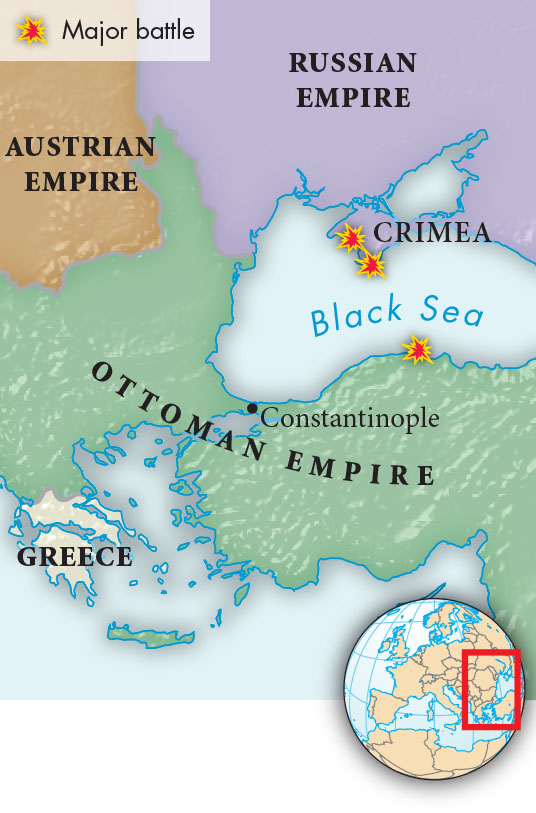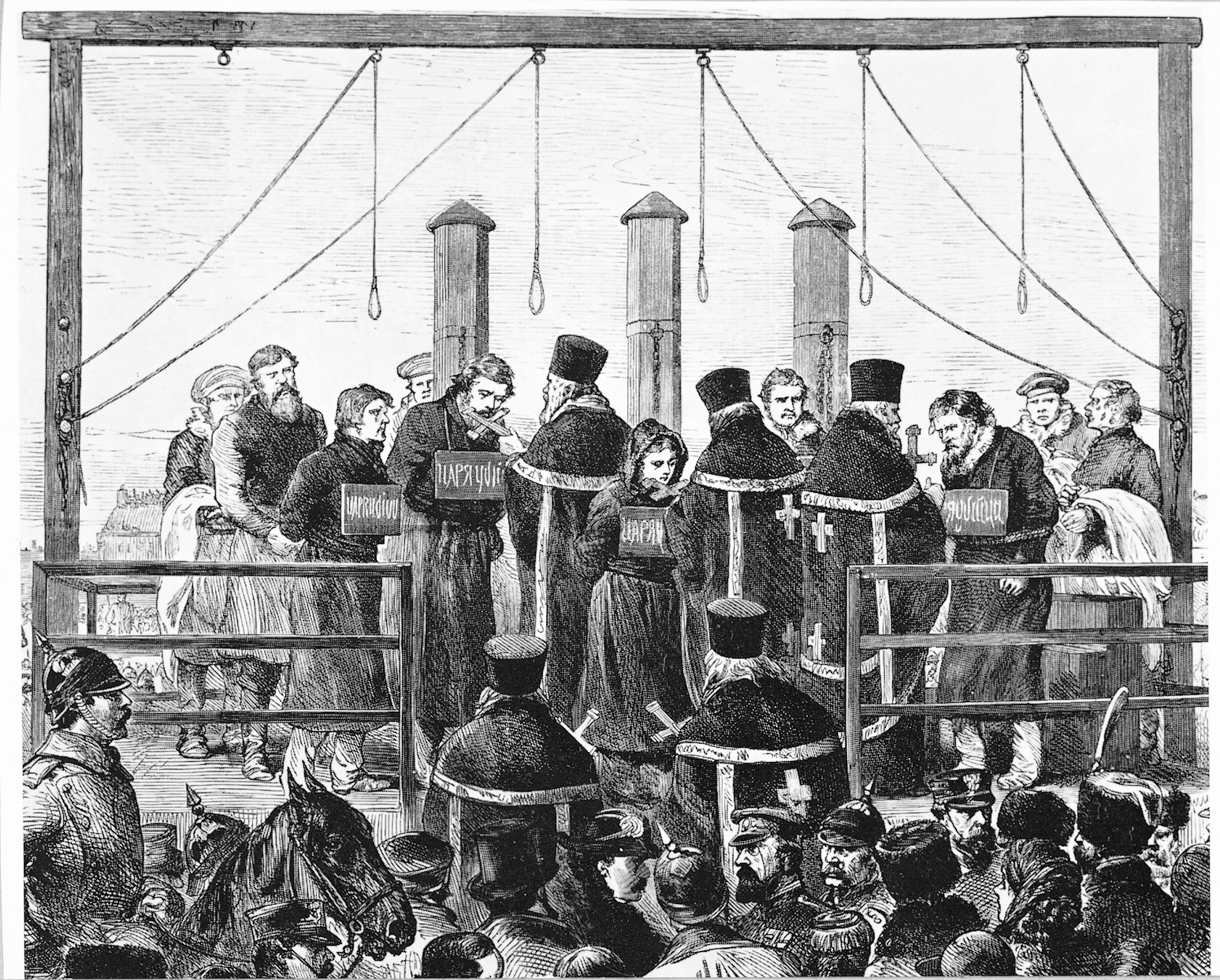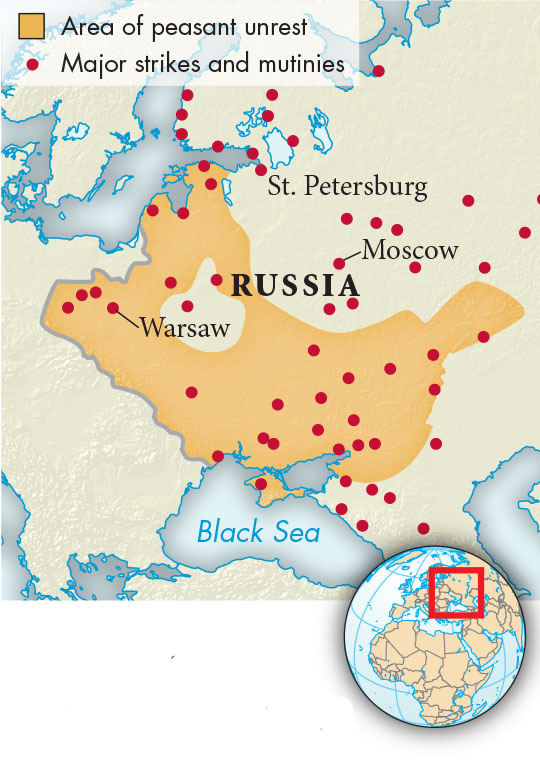A History of World Societies:
Printed Page 732
A History of World Societies Value
Edition: Printed Page 741
The Modernization of Russia

In the 1850s Russia was a poor agrarian society with a rapidly growing population. Almost 90 percent of the population lived off the land, and serfdom was still the basic social institution. Then the Crimean War of 1853 to 1856 arose from the breakdown of the balance of power established at the Congress of Vienna, European competition over influence in the Middle East, and Russian desires to expand into European territories held by the Ottoman Empire. In this war of massive modern weaponry and staggering casualties, France and Great Britain, aided by Sardinia and the Ottoman Empire, inflicted a humiliating defeat on Russia.
Russia’s military defeat showed that it had fallen behind the industrializing nations of western Europe. Russia needed railroads, better armaments, and military reorganization if it was to maintain its international position. Moreover, the war had caused hardship and raised the specter of massive peasant rebellion. Military disaster thus forced the new tsar, Alexander II (r. 1855–
The first and greatest of the reforms was the freeing of the serfs in 1861. The emancipated peasants received, on average, about half of the land, which was to be collectively owned by peasant villages. The prices for the land were high, and collective ownership limited the possibilities of agricultural improvement and migration to urban areas. Thus the effects of the reform were limited. More successful was reform of the legal system, which established independent courts and equality before the law. The government also relaxed censorship and partially liberalized policies toward Russian Jews.
Russia’s greatest strides toward modernization were economic rather than political. Rapid, government-
In 1881 an anarchist assassinated Alexander II, and the reform era came to an abrupt end. Political modernization remained frozen until 1905, but economic modernization sped forward in the massive industrial surge of the 1890s. The key leader was Sergei Witte (suhr-

By 1900 a fiercely independent Russia was catching up with western Europe and expanding its empire in Asia. By 1903 Russia had established a sphere of influence in Chinese Manchuria and was eyeing northern Korea. When the diplomatic protests of equally imperialistic Japan were ignored, the Japanese launched a surprise attack on Russian forces in Manchuria in February 1904. After Japan scored repeated victories, to the amazement of self-

Military disaster in East Asia brought political upheaval at home. On January 22, 1905, workers peacefully protesting for improved working conditions and higher wages were attacked by the tsar’s troops outside the Winter Palace. Over one hundred were killed and around three hundred wounded. This event, known as Bloody Sunday, set off a wave of strikes, peasant uprisings, and troop mutinies across Russia. The revolutionary surge culminated in October 1905 in a paralyzing general strike, which forced the government to capitulate. The tsar, Nicholas II (r. 1894–
Under the new constitution, Nicholas II retained great powers and the Duma had only limited authority. The middle-